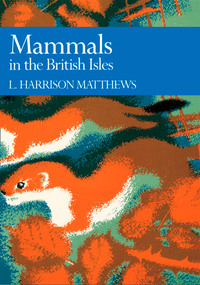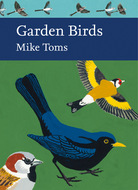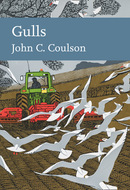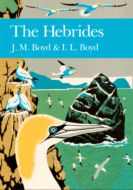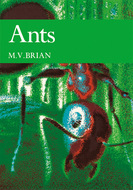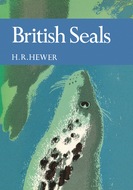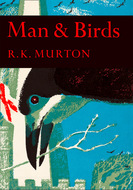Książki nie można pobrać jako pliku, ale można ją czytać w naszej aplikacji lub online na stronie.
Czytaj książkę: «Mammals in the British Isles»

COPYRIGHT
William Collins
An imprint of HarperCollinsPublishers 1 London Bridge Street London SE1 9GF
This eBook edition published by William Collins in 2019
First published 1982
Copyright © L. Harrison Matthews 1982
L. Harrison Matthews asserts his moral right to be identified as the author of this work.
Black and white reproduction by
Adroit Photo-Litho Ltd, Birmingham
HarperCollinsPublishers has made every reasonable effort to ensure that any picture content and written content in this ebook has been included or removed in accordance with the contractual and technological constraints in operation at the time of publication.
Source ISBN 9780007417643
Ebook Edition © FEBRUARY 2019 ISBN: 9780007406562
Version: 2019–02–26
Note to Readers
This ebook contains the following accessibility features which, if supported by your device, can be accessed via your ereader/accessibility settings:
Change of font size and line height
Change of background and font colours
Change of font
Change justification
Text to speech
[Page numbers taken from the following print edition: ISBN 9780007406562]
EDITORS
Margaret Davies, C.B.E., M.A., Ph.D.
Kenneth Mellanby, C.B.E., Sc.D.
S.M. Walters, M.A., Ph.D.
PHOTOGRAPHIC EDITOR
Eric Hosking, F.R.P.S.
The aim of this series is to interest the general reader in the wild life of Britain by recapturing the inquiring spirit of the old naturalists. The Editors believe that the natural pride of the British public in the native fauna and flora. to which must be added concern for their conservation, is best fostered by maintaining a high standard of accuracy combined with clarity of exposition in presenting the results of modern scientific research.
CONTENTS
COVER
TITLE PAGE
COPYRIGHT
Note to Readers
PLATES
EDITORS’ PREFACE
AUTHOR’S PREFACE
1. The Mammals of the British Isles
2. Ice Ages
3. The Evolution of the Environment
4. Distribution and Habitats
5. Ranges, Territories and Populations
6. Social Behaviour
7. Behaviour and the Environment
8. Communication
9. Internal and External Rhythms
10. Man and the other Mammals
PICTURE SECTION
APPENDIX
REFERENCES
INDEX
FOOTNOTES
ABOUT THE PUBLISHER
PLATES
1. Hedgehog in nest; young hedgehog (G. Kinns)
2. Common shrew (G. Kinns), pygmy shrew (G. Kinns); lesser white-toothed shrew (D. Hosking)
3. Water shrew (G. Kinns); noctule bat (J.H.D. Hooper)
4. Roost of greater horseshoe bats in a cave (J.H.D. Hooper); the rare mouse-eared bat in flight (S.C. Bisserôt)
5. Water vole (D. Hosking); bank vole (G. Kinns); field vole’s nest (G. Kinns)
6. Yellow-necked mouse; wood mouse burrow; harvest mouse and summer nest (G. Kinns)
7. Common dormouse; edible or fat dormouse (G. Kinns)
8. Runway of common rat (G. Kinns); common rat feeding (G. Kinns); introduced coypu (L.M. Gosling)
9. Mountain hare (B. Tulloch); brown hare (G. Kinns)
10. Red squirrel (A.L. Goodson); grey squirrel in its den (F.W. Lane); litter of fir cones (G. Kinns)
11. Badger with old bedding; overlapping fox and badger territories (G. Kinns)
12. Country fox cubs (G. Kinns); town fox raiding a dustbin (D. Hosking)
13. A hunting weasel (G. Kinns); mink (F.W. Lane)
14. Tracks of an otter in snow (B. Tulloch); wild cat from the highlands of Scotland (G. Kinns)
15. Common seals on a sandbank in the Wash (R.W. Vaughan); grey seal (G. Kinns)
16. Two red stags; red deer-stag ‘roaring’; stag showing flehmen action (T. Clutton-Brock)
EDITORS’ PREFACE
IT IS NOW over 30 years since Dr Matthews wrote his British Mammals, which was No. 21 in the New Naturalist series. The Editors then described it as ‘the most important book on British mammals that has ever been published, bringing together as it does an enormous number of facts into a new synthesis’. The reviewers and our public fully endorsed this opinion, and the book has been a continuing success ever since it was published. It is still the most useful volume in its field, and owners of copies will treasure them on their shelves, and make use of them in their studies, for many years to come.
British Mammals, when it was published, was topical and very up to date, bringing together the results of Dr Matthews’ own observations and the research of many other mammalogists. Since then the subject has made great progress, often stimulated by Dr Matthews’ own writings. As a result there was need for considerable addition to the original text, even though there was little that newer investigations had shown to require correction. British Mammals was already a long book, though every word of its text was interesting and worth reading. Further extensions and revisions would have produced a volume which, in today’s circumstances, would have been so expensive as to have been out of reach of many of those for whom it was intended – ‘the general reader interested in wildlife’.
It was for this reason that we persuaded Dr Matthews to produce an entirely new book. It is in no way a revision of the 1952 publication. Although considerably shorter than its predecessor, it covers all facets of the life of the mammals of the British Isles. Like others in this series, it is not a text book. Several admirable volumes of this nature are now available; this has made it possible to reduce the description of the species to a minimum. Once more the author has produced a synthesis of modern knowledge, which treats mammals as living creatures, living in and adapted to their environment. We are confident that it will meet a real need of today’s readers, and that it is a worthy successor to the author’s previous volume.
AUTHOR’S PREFACE
THIRTY years have passed since my volume ‘British Mammals’ was published as No. 21 in the New Naturalist series, and a large amount of new information has come to hand during that time. The cost of resetting a fully revised new edition was too expensive for the publishers to face; I had therefore to insist that it should be allowed to go out of print – I could not let readers be fobbed off with so out-of-date a book. Paradoxically, the publishers then asked me to write a new and different book on our mammals, and here it is.
I have tried to give a general picture of the British mammals and the things influencing their numbers and distribution both now and in the past, together with the history and development of their environment. I then examine various aspects of their biology, dealing with them as living animals in the field rather than as captives in the laboratory or preserved specimens in museums. I have avoided elaborating technical points of anatomical structure unless they are relevant to matters of function and physiology. In a land so densely populated as the British Isles the paths of animal and man inevitably cross at many places, so I conclude with an account of such relationships and a consideration of the measures man has taken for the control and conservation of his fellow mammals.
The growth in knowledge of the British mammals that has occurred since the publication of the previous book is due to the greatly increased number of people taking an active interest in the subject. Most of them are members of the Mammal Society which in bringing them together to present and discuss the results of their researches at its annual conferences and other meetings has greatly stimulated an interest in the scientific study of mammals. Membership is open to anyone interested; its address is Harvest House, 62 London Road, Reading, Berkshire RG1 5AS.
LHM
CHAPTER 1
THE MAMMALS OF THE BRITISH ISLES
THE number of different kinds of mammal indigenous to the British Isles, and now living in them, is comparatively small. About four thousand kinds of living mammals are known to science throughout the world, but of these only forty-one indigenous land mammals inhabit our region. In addition two kinds of seal breed on our coasts, and seventeen kinds of whale and dolphin are regular inhabitants of our inshore or offshore seas, making a total of sixty.
This total, however, does not include all the kinds of mammal now living in our islands, for we have no less than fourteen kinds that have been introduced by man and have become established members of the fauna. There are moreover two kinds of bat, six kinds of whale or dolphin, and six kinds of seal that have occasionally wandered to our shores and are regarded as accidental vagrants. In addition five kinds of domestic animal have become feral – that is, have run wild – in various parts of the country, and if we add to these four kinds of indigenous mammal that have been exterminated in historic times, and one introduced but subsequently exterminated, we have a grand total of ninety-eight. This represents about one fortieth of the number of known living mammals, far less than the more than five hundred kinds of bird ‘admitted to the British list’, which represent about one fifteenth of the known kinds of bird inhabiting the world.
As might be expected in a country so densely populated by man as the British Isles, most of the mammals are small and inconspicuous so that they easily keep out of harm’s way. The majority are active only by night; those active during the day live concealed underground, in woodland and hedgerow litter, or among dense vegetation. Forty-five different kinds fall into the category of small mammals, ranging in size from the pygmy shrew to the hedgehog and the pine marten; they include the insectivores, the shrews, mole and hedgehog; the bats; all but one of the rodents, the rats, mice and voles; and six of the smaller carnivores such as the stoat, weasel, and polecat.
The medium-sized mammals are much fewer; they range in size from the rabbit to the fox, and include the leporids, the rabbit and hares; four carnivores, the fox, badger, otter and wild cat; one introduced rodent, the coypu; and one introduced marsupial, the red-necked wallaby – only nine different kinds in all. Most of them are nocturnal or crepuscular – active around dusk and dawn – and all but three lie up in underground burrows for much of the daylight hours. The brown hare lies up in a form, a slight depression among herbage or even in a bare ploughed field, in which it is remarkably difficult to detect; if disturbed it escapes from danger by its speed in running and adroitness in jinking if pursued. The mountain hare digs short burrows but usually sits at the entrance and escapes from danger by running away rather than entering the burrow; it too is remarkably inconspicuous when it sits still unless it is in its white winter coat and the ground is not covered with snow. The wallaby lies up in scrubby woodland when not grazing in the open.
Of the large mammals there are only four kinds that are indigenous to our fauna, two kinds of seal and two of deer. To these must be added five introduced kinds of deer, one semi-domesticated; the semiferal horse; and the feral sheep and goat. The only enemy these have to fear is man. The seals avoid him by hauling out only on inaccessible ocean beaches, in sea caves, on remote uninhabited islands of the western coasts, or sandbanks such as those of the Wash where no one can approach unobserved within a mile. The native red deer live in the hills and mountains of the north where there is plenty of room to flee from approaching danger, which they are quick to apprehend by scent, hearing and sight in that order. The native roe deer is a woodland animal, and by day remains hidden in thick cover from which it emerges to feed in the open at dusk and dawn. Where these animals have been introduced to other places, or have become established through escapes from parks and enclosures, they are usually nocturnal inhabitants of woodlands. The introduced fallow, sika, muntjac, and Chinese water deer avoid disturbance by man in a similar way, generally emerging from thick cover only by night or at dawn and dusk. Most of these introductions and escapes have increased greatly in numbers and distribution since the end of the war in 1945, and often live close to human habitations where, because of their secretive habits, they are seldom seen unless specially sought for. Their depredations in field and garden are more commonly seen and noticed with disapproval. The feral, miscalled ‘wild’, horses, goats and sheep live on open moors and mountains where, like the red deer, they can from afar see the approach of danger – that is, man – and can move swiftly away to safety. The feral ponies of the New Forest, however, are so used to the sight of man that they take little notice of his presence, and often approach picnickers to beg for titbits.
The whales and dolphins all fall into the category of large mammals, but as they are creatures of the seas their way of life is so different from that of the land mammals that they cannot usefully be considered as living in the British Isles.
We shall now briefly pass in review the different kinds of mammal, and their taxonomic classification, before going on to consider their habits, habitats and ways of life. We fortunately do not need to enter into minute description of their diagnostic characters and structure, or the basic details of their biology, which are all set forth with great clarity in the second edition of the Handbook of British Mammals, edited for the Mammal Society by G.B. Corbet and H.N. Southern, and published in 1977, a work indispensible to naturalists interested in British Mammals.39
Many naturalists have worked out schemes of classification for animals both before and since the Swedish naturalist Carl von Linné, whose name is latinised as Linnaeus, invented the binomial system. He gave each kind of animal and plant a specific name, and grouped the species, ‘species’ being merely the latin for ‘kind’, that showed some resemblance to each other into genera, singular ‘genus’, the latin for a clan or tribe. For example he classified the rats and mice into the genus Mus, giving the specific names Mus rattus to the black rat, Mus musculus to the house mouse, and Mus sylvaticus to the wood mouse. Since his time they have been separated into different genera, but still retain their specific names.
Before the time of Linnaeus naturalists distinguished species by using cumbrous compound names often amounting to short descriptive sentences. For example, Linnaeus named the daisy of our lawns and fields Bellis perennis, whereas many earlier botanists called it ‘Bellis scapo nudo unifloro’. Early writers in English often used expressions that appear quaint to modern eyes; Edward Topsell whose ‘Historie of Foure-footed Beastes’ was published in 1607–08, heads his chapter on mice ‘Of the vulgar little Mouse’ – meaning the ‘common house mouse’ – to distinguish it from the ‘Vulgar Rat, or great domesticall Mouse’.
When species are classified into genera, the genera themselves need to be arranged into convenient groups, the genera in each having some characters in common. Thus genera are gathered into families, families into orders, orders into classes, and classes into phyla (singular, phylum). Intermediate grades such as superfamily or subfamily are often used for finer divisions of classification. Thus the mammals are put into the Class Mammalia of the sub-phylum Vertebrata of the Phylum Chordata; and the ‘vulgar little mouse’ becomes Mus musculus of the genus Mus, of the Family Muridae, of the Order Rodentia, of the class Mammalia.
Although this system of classification is linear it must not be read as though it were a genealogy or family tree in which the successive levels are the descendants of the previous ones. It is merely a convention and a convenience, at least partly determined by the necessity of representing it in only two dimensions on a written or printed sheet of paper. In nature all the living species of animal are on a single level, and can be likened to the tips of the twigs of a three-dimensional tree, of which the dead-wood in the branches, limbs and trunk represents the extinct ancestors of the living species. The analogy is the more apt because the wood ascends continuously from its origin to its utmost ramifications unlike a family tree which is inverted and where the descent is cut up into generations.
The scheme of classification for the mammals now almost universally accepted and adopted by naturalists was worked out by the American zoologist G.G. Simpson and published in 1945.131 Some minor modifications have been made to it during the last thirty-five years, but it has proved so useful, and is supported by such erudite and convincing arguments, that it has become the standard system adopted by zoologists throughout the world. According to the modified Simpson’s system there are 33 orders of mammals, 14 of which are extinct; 257 families, of which 139 or 54 per cent are extinct; and 2,864 genera, of which 1,932 or 67 per cent are extinct. Thus the living species represent only a small fraction of the total that have lived since the class Mammalia evolved. The diversity and number of species in all the orders except perhaps the rodents reached their peak in the Miocene or Pliocene epochs – some twenty-five to three million years ago – since when they have declined to their present level.
In the British Isles, excluding the whales, we have mammals representing nine of the nineteen orders now living, but of these only seven are indigenous, the two others are either introduced and naturalised, or are derived from stocks of domestic animals. Our fauna is therefore no more than a small sample of the mammalian diversity that ornaments the fauna of the world. It has, moreover, not contained a larger number of orders since the land became generally habitable by warm-blooded animals at the end of the great glaciation of the Pleistocene epoch, about half a million years ago. In the preceeding epochs, before the ice ages, several other orders were represented by species of mammal that became extinct long before the present pattern of the fauna evolved.
Before we discuss the problematic origin of the present fauna we should enumerate and specify the species about which we shall be speaking. In following Simpson’s arrangement of the orders the indigenous species are necessarily not separated from those that have been introduced or are extinct.
ORDER MARSUPIALIA
The marsupials differ so fundamentally from the other mammals that they are placed in a separate Infraclass, the Metatheria, whereas the other mammals of our fauna are included in the Infraclass Eutheria. The marsupials show many unique anatomical characters, but are popularly known merely by a single one, as the mammals that carry their young in a pouch. This is not universally true, for some of them are pouchless; but in all of them the young are born at a comparatively early stage of development and thus need to be carried attached to the mother’s nipples. The marsupials are typically the mammals of the Australasian region, but in addition many species live in South America and one, the Virginian opossum, extends into North America. The living species are divided into eight families of which one, containing the kangaroos and wallabies, is represented in our fauna by a single introduced species.
Family Macropodidae
Macropus rufogriseus, the red-necked wallaby or Bennett’s wallaby, is a medium sized kangaroo-like animal weighing up to about 30 pounds, sometimes nearly 50 pounds. It is native to south-eastern Australia and Tasmania; but as it is easily kept in captivity it is commonly exhibited in zoos and parks of many lands, whence it sometimes escapes. Small feral populations of that origin have become established in Sussex and Derbyshire; smaller colonies deliberately introduced on Herm in the Channel Islands, and on Lambay Island off the coast of Co. Dublin in Eire have died out. Although the English populations have been established for over thirty years they remain small because wallabies are liable to suffer heavy mortality in severe winters.
ORDER INSECTIVORA
The insectivores are mostly small mammals characterised by many primitive or generalised mammalian characters. They are considered to be descended with least change from the ancestral stock of the mammals, though all living species have various specialised adaptations. Insectivores live in most parts of the world except Australasia and South America; they include the tenrecs, hedgehogs, moles, desmans, and shrews.
Family Erinaceidae
Erinaceus europaeus, the hedgehog, our only mammal with prickles in its skin, is the largest of our insectivores. It is present throughout the mainland of Great Britain and Ireland and is common in lowland areas, particularly in the suburbs of towns. It is also found in many of the islands, but has probably been introduced into most of them by man. It lives in woods and hedgerows, coming into the open to feed as night falls. The hedgehog and the dormouse are our only mammals besides the bats that hibernate in winter.
Family Talpidae
Talpa europaea, the mole, is our only mammal that spends nearly all of its life underground. Its cylindrical body, some five to five and a half inches in length, is covered with black velvety fur. The fore limbs and their muscles are highly adapted for tunnelling in the earth, and the strongly clawed hands are broadened internally by an extra bone, the radial sesamoid. The hind feet are similarly but less conspicuously reinforced by an accessory sesamoid bone. The eyes are minute and hidden by the fur, and there is not an ear pinna, but the long snout is plentifully supplied with special touch organs. The sites of mole burrows are shown by the conspicuous heaps of earth pushed up to the surface as the mole digs its underground tunnels, in which it spends most of its life feeding mainly on earthworms which fall into the burrows. Moles are present throughout Great Britain but not Ireland or the Isle of Man; they are not found on many of the smaller islands except Anglesey and the Isle of Wight, Alderney and Jersey.
Family Soricidae
The shrews are small mouse-like animals with velvety fur, long pointed snouts, small eyes and ears. They are insectivorous and carnivorous, generally seeking their food under thick vegetation and litter below which they have runways; some species dig burrows. The first incisor teeth are large and project forwards, acting like forceps in picking up small food objects; the back teeth bear sharp pointed cusps. Shrews need comparatively large quantities of food, and are consequently active by day and night, alternating short periods of activity and rest throughout the twenty-four hours. They soon die of starvation if denied food for a few hours.
The genus Sorex contains two British species, the common shrew, S. araneus, and the pygmy shrew S. minutus, the latter being our smallest British mammal. The enamel of the tips of the teeth is red in both species, which are distinguished by size, relative length of tail which is longer in the pygmy shrew, and colour of the fur, darker in S. araneus but lighter in S. minutus. The common shrew is found throughout England, Scotland and Wales and on many of the islands, but is absent from Ireland, Orkney, Shetland, the outer Hebrides and Man. The pygmy shrew, although less abundant, is found throughout the whole of the British Isles except Shetland, the Scilly and Channel Islands. The common shrew is peculiar in showing chromosome polymorphism, that is, the number and form of the chromosomes differs in animals from different parts of the country.62 Both species are annuals: young born in one summer breed in the next and die in the following autumn, so the winter population consists entirely of immature animals, and none normally lives through a second winter.
The water shrew, N. fodiens, is the only British species of the genus Neomys, and is easily distinguished by its larger size and the black colour of the fur on the upper parts; it too has red-tipped teeth. Although it is aquatic and has fringes of stiff hairs on feet and tail that aid in swimming, it is nevertheless often found at considerable distances from water in woods and hedgerows in similar places to those inhabited by other shrews. It lives in burrows in the banks of clear streams and ponds; when it enters the water the fur traps air so that it appears silvery. The fur nevertheless soon becomes wet and is dried on landing by squeegeeing through the tight fitting burrow. Its food consists of invertebrates and even creatures as large as itself such as frogs and small fish. It is found throughout the mainland but is absent from Ireland, Isle of Man, and the western and northern islands of Scotland. The water shrew is unique among British mammals in being the only one with a poisonous bite, because the submaxillary salivary glands contain a venom that paralyses small prey.
The other two species of British shrew belong to the genus Crocidura, at once distinguished from the rest by their white teeth. Their ears are larger than in the others, and the tails bear a number of long scattered hairs. They are found only in the Scilly and Channel Islands, where they live in habitats similar to those of the common and pygmy shrews. The lesser white-toothed shrew, C. suaveolens, is found on most of the Scilly Islands, Jersey and Sark; it was probably unintentionally introduced into Scilly from the continent by man. The greater white-toothed shrew, C. russula, is found only on Alderney, Guernsey and Herm in the Channel Islands. The water and greater white-toothed shrews reach a life span of eighteen months or a little more, but the lesser white-toothed shrew is as short-lived as the common and pygmy shrews.
ORDER CHIROPTERA – BATS
All the British bats are comparatively small animals, and all are solely insectivorous, and nocturnal or crepuscular. They generally catch their food on the wing but some carry their larger prey to habitual perches to eat it. During darkness they find their prey by echolocation or ‘sonar’, emitting pulses of high frequency ultrasound which are reflected back from surrounding objects to give a mental image probably similar to that produced by sight in other animals. The horseshoe bats emit pulses through the nostrils, the other species through the open mouth. All species hibernate during the winter, and become torpid for four or five months, though not continuously, for hibernation is interrupted by short periods of activity. Bats are long-lived in comparison with other small mammals, reaching an age of four or five, and sometimes over twenty years.

Fig. 1. Side and front views of the head of a horseshoe bat to show the details of the nose-leaf.
Family Rhinolophidae
Two species of this family are members of the British fauna, the greater and lesser horseshoe bats, Rhinolophus ferrumequinum and R. hipposideros. They are characterised by the possession of ‘nose leaves’, thin fleshy outgrowths arising round the nostrils but overlapping the fur of the face with their free outer parts. Their structure is complex and better described by a drawing than by words; the part over the muzzle and round the nostrils is crescentic in shape, hence the English, Latin, and latinised Greek names of these bats.
The nose leaf is part of the special echolocation system. The greater horseshoe bat has a wingspan of 34 to 39 centimetres and is thus one of our larger bats. Its natural roosts are in caves, but it also uses mines and the cellars and roof spaces of buildings. In the British Isles it is found only in southwest England and south Wales. The lesser horseshoe bat is one of our smaller species, with a wingspan of only 22 to 25 centimetres. It roosts in similar places to those used by the larger species, and has a larger range, being found in southwest England, all of Wales and extending into Yorkshire, and far to the west in western Ireland.
Family Vespertilionidae
All the other British bats belong to this family – fifteen species in seven genera. They are mostly small to medium-sized bats but the serotine and noctule equal the greater horseshoe in wingspan, and one, the rare mouse-eared bat exceeds it by up to six centimetres.
Of the fifteen species, six are common throughout much of the British Isles, though only one, the pipistrelle, is found everywhere except in Shetland; they are the whiskered, Natterer’s, Daubenton’s, noctule, pipistrelle, and long-eared bats. Five species are rare, or occasional vagrants – Bechstein’s, the mouse-eared, parti-coloured, Nathusius’ pipistrelle, and the grey long-eared bats. The remaining four species are intermediate, having a limited distribution within the bounds of which they may not be scarce. They are Brandt’s, the serotine, Leisler’s and the barbastelle bats.
Six species of the genus Myotis are British. The whiskered bat, M. mystacinus, is a small dark grey bat that roosts in trees and buildings and often hibernates in caves. It is found throughout England, Wales and Ireland, but is less common in southern Scotland and absent from the north. Brandt’s bat, M. brandti, so closely resembles the whiskered bat that it has only recently been recognised as a separate species, differing slightly in details of the ear and teeth; it is known from many parts of England and Wales but its overall distribution has yet to be ascertained. Natterer’s bat, M. nattereri, is larger, with a wingspan of up to 30 cm, and the fur brown above and light or white below. It can be distinguished from all others by the fringe of stiff short hairs along the edge of the bare skin joining the legs and tail – the interfemoral part of the patagium or double layer of skin that makes a bat in effect an aerofoil. It roosts in trees, buildings and caves throughout the British Isles as far north as central Scotland. Bechstein’s bat, M. bechsteini, very similar to Natterer’s bat but having longer ears and lacking the fringe of hairs on the interfemoral patagium, is a rare woodland bat that has occasionally been found in southern England, mostly in Dorset. The mouse-eared bat, M. myotis, our largest species with wingspan up to 45 centimetres, was known only as a rare vagrant until 1956 when a small colony was found in a cave in Dorset; another was found in Sussex fifteen years later. Daubenton’s bat, M. daubentoni, is medium in size, dark brown above and pale grey below. The ear is comparatively short, and the feet large. It is often seen catching insects flying low over water, but is by no means confined to this way of feeding and frequently hunts in other places. It roosts in hollow trees and buildings, and often hibernates in caves. It is found throughout the British Isles except the northern parts of Scotland and the Hebrides.
Darmowy fragment się skończył.
